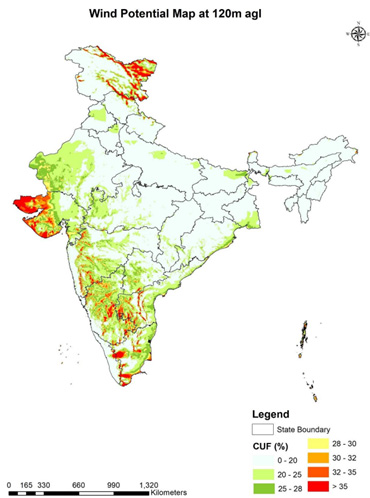India’s wind energy sector stands as a testament to the country’s commitment to sustainable power generation. With a robust domestic industry and an impressive installed capacity, India is making significant strides in harnessing wind energy to meet its growing energy demands and environmental goals.
Current Landscape of Wind Energy in India
India is currently ranked fourth in the world for wind energy capacity, a position earned through consistent growth and technological advancements driven by leading wind energy companies. The country boasts a strong wind power ecosystem, including a substantial manufacturing base capable of producing approximately 15,000 MW annually. Despite recent market slowdowns, the sector is poised for a resurgence with expected increases in tender volumes and potential global supply chain advantages.

By the end of 2022, India’s renewable energy installations totaled 121 GW, with wind power contributing 35% of this figure. To meet its target of 140 GW of wind capacity by 2030 and achieve net-zero emissions by 2070, India needs to accelerate the deployment of wind projects. The key drivers for this growth include cost competitiveness, compliance with Renewable Purchase Obligations (RPOs), and dedicated grid infrastructure.
Exploring India’s Wind Energy Potential
India’s wind energy potential is impressive, particularly when viewed through the lens of various height assessments. The National Institute of Wind Energy (NIWE) has installed over 900 wind-monitoring stations across the country, generating detailed wind potential maps. The assessments indicate significant potential at different heights:
State | Wind Potential at 120 m (GW) | Wind Potential at 150 m (GW) |
Andhra Pradesh | 74.90 | 123.3 |
Gujarat | 142.56 | 180.8 |
Karnataka | 124.15 | 169.3 |
Madhya Pradesh | 15.40 | 55.4 |
Maharashtra | 98.21 | 173.9 |
Rajasthan | 127.75 | 284.2 |
Tamil Nadu | 68.75 | 95.1 |
Telangana | 24.83 | 54.7 |
Total 8 States | 676.55 | 1136.7 |
Others | 18.95 | 27.1 |
Total | 695.50 | 1163.9 |

This data highlights the substantial wind energy potential in states such as Gujarat, Maharashtra, and Rajasthan, which are critical to India’s wind energy strategy.
Onshore and Offshore Wind Energy
Onshore wind power has been the cornerstone of India’s renewable energy journey. However, there is growing interest in offshore wind resources. India is projected to install up to 21.2 GW of offshore wind capacity by 2027, with ambitious scenarios reaching 26.2 GW. To tap into this potential, the country will need to significantly ramp up its offshore wind installations, which are currently expected to increase from 1.8 GW in 2022 to 5 GW in 2025.
Explore the differences and benefits of onshore and offshore wind energy in our comparison blog.
Strengthening the Supply Chain
India’s manufacturing capabilities in the wind sector are also expanding. The country has an annual nacelle manufacturing capacity of 11.5 GW spread across key states like Karnataka, Maharashtra, Gujarat, and Tamil Nadu. With only around 2 GW utilized domestically in 2022, there is a substantial opportunity to increase production and establish India as a global hub for wind energy exports.
Becoming a Global Export Hub
To strengthen its position as a global wind energy export hub, India must focus on several key areas:
- Building a Solid Domestic Market: Ensure a sustainable and growing domestic demand for wind energy.
- Aligning Manufacturing Capabilities: Match global product standards and innovation.
- Demonstrating Cost Leadership: Invest in new technologies, research, and a skilled workforce.
- Offering Export Incentives: Create favorable conditions for international trade.
By addressing these priorities, India can enhance its role in the global wind supply chain and contribute significantly to the world’s clean energy transition.
India’s wind energy sector, with its vast potential and growing capabilities, represents a critical element of the country’s strategy to achieve its renewable energy targets and contribute to global sustainability efforts.








